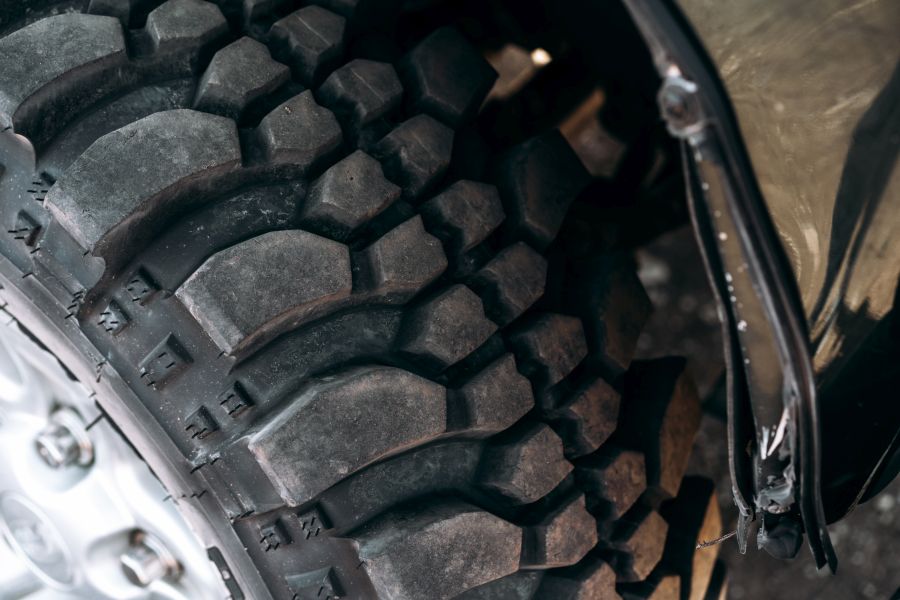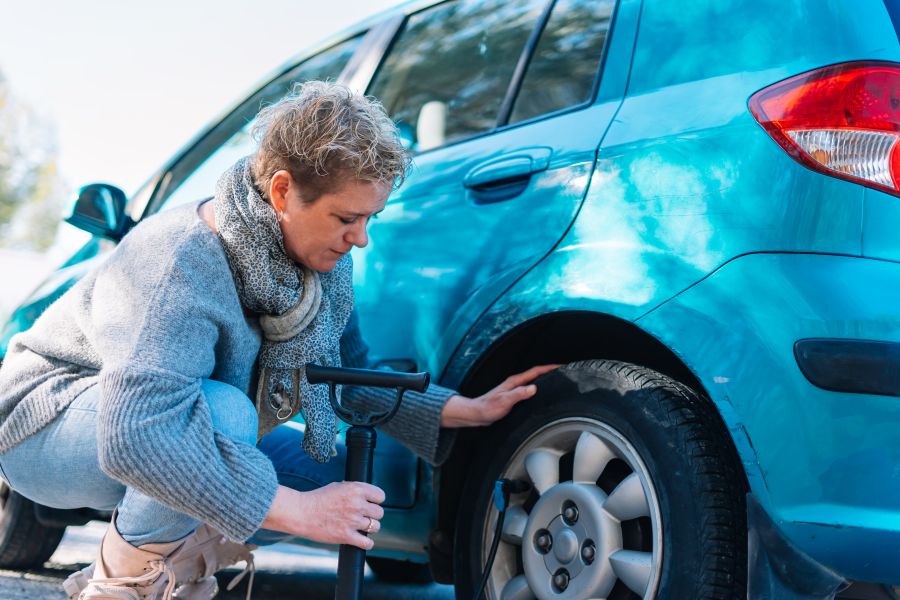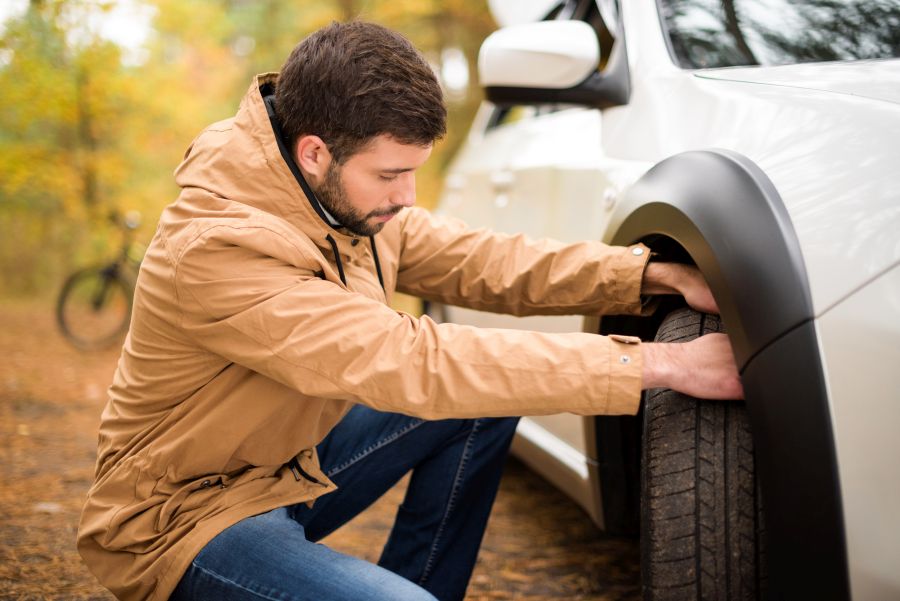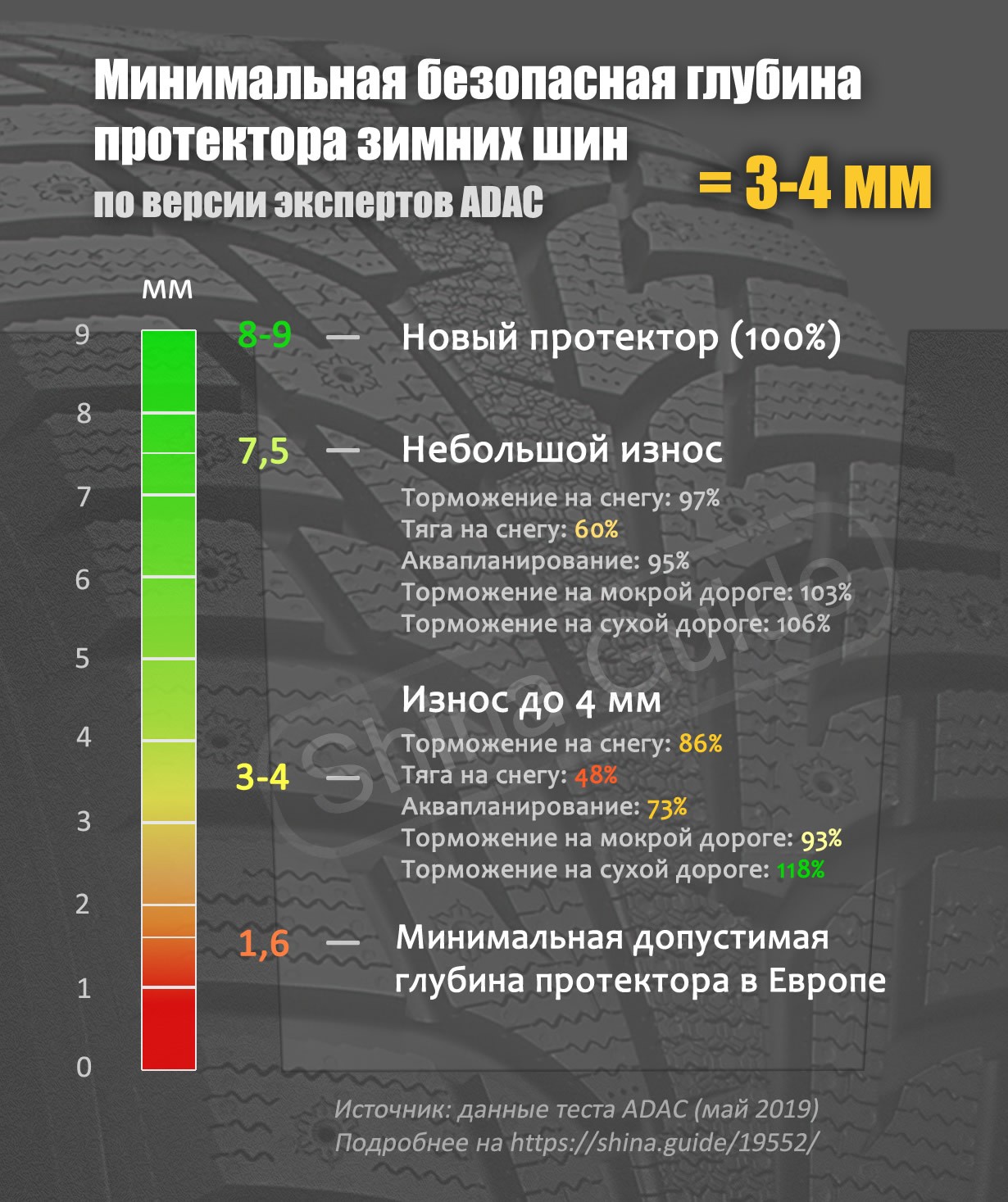
What is the correct tire pressure?
Content
- Car tire pressure - how to distinguish units?
- What should be the tire pressure?
- What tire pressure should I set depending on the conditions?
- Correct tire pressure - why do you need to check it?
- How to check the tire pressure of a car?
- How many atmospheres are there in tires, or how to check the level without factory sensors
- Frequently Asked Questions
Tire pressure affects not only comfort, but also safety, as well as tire wear rate. Therefore, careful dosing in accordance with the manufacturer's recommendations is essential for safe travel without endangering yourself. And these are not trifles at all, because almost 20% of all collisions and accidents are associated with cars with faulty steering. After all, wheels and tires are the only point of contact between a car and the ground.
Car tire pressure - how to distinguish units?

Depending on the place of origin of the vehicle, it may have a different designation for the amount of air injected into the wheels. So, for example, in British models or just from that market, you will notice that the PSI designation is used. This translates to pounds per square inch. Of course, such a designation can say little, but when converted to units used in Europe, i.e. to bars, you can see that 1 psi = 0,069 bar.
Tire pressure is also called atmosphere.. Approximately 1 bar and 1 atmosphere (atm.) it's the same value. The differences between them reach several hundredths. So we can assume that they are one and the same. It is sometimes also referred to as kPa (kilopascals), which means 0,01 bar. Familiarization with the measures of gas pressure, including, of course, the air supplied to the wheels, will allow you to pump them up using a device with any indicator.
What should be the tire pressure?
For most passenger cars, 2,2 bar is assumed to be a suitable standard tire pressure. Of course, this is only a conditional level of pressure in the tires of the car. You can find the most accurate values on the nameplate located inside the vehicle (usually on the driver's or passenger's door pillar). It shows what tire pressure should be on each axle and when driving with and without passengers..
Some manufacturers also suggest which values to put on wheels in summer and which in winter. In many cases there are instructions for specific rim sizes and therefore tire versions. Therefore, sticking to 2,2 bar is not a good idea. Moreover, the value of tire pressure depends on other factors.
What tire pressure should I set depending on the conditions?

Looking at the nameplate, you will notice that the differences between specific vehicle axles are not limited to tire size. One of the next pieces of information is the luggage you have in the car and the number of passengers. The difference between tire inflation levels can be as much as 0,3/0,4 bar depending on how many people you are carrying and whether you have cargo in the trunk. While in city cars or sedans the distribution is usually similar, in station wagons it can happen that the front axle wheels do not need to raise the air level by more than 0,1 or 0,2 bar.
Another question is related to how much air should be in the tires in winter and summer.. Some are of the opinion that when driving on snow, it should be lowered for better traction. Manufacturers and automotive industry professionals do not recommend this practice. In addition, it is very dangerous due to frequent temperature changes.
Temperature affects the volume and pressure of a gas. When it increases, the volume increases, and when it decreases, it decreases. Therefore, a much better way for a stable ride is to increase the manufacturer's recommended tire pressure by about 10-15%. Tire pressures used in winter should be checked once a month.. Of course, the period of severe winter in our country does not last long, but it's not worth the risk. A 10°C drop in temperature reduces tire pressure by 0,1 bar.
Correct tire pressure - why do you need to check it?
There are several reasons why you need to check your tire pressure. Over time, wheel components such as valves (valves) or even alloy wheels can wear out and leak air. This is due to careless maintenance (valves are uncritically expensive and should be changed at least once every two years). In addition, careless driving such as rubbing against curbs or running over curbs can cause air to escape slowly.
A puncture with a nail or other sharp object is also inevitable. It is highly likely that it will get stuck in the tread, due to which the tire pressure will drop slightly, but constantly.
How to check the tire pressure of a car?
In modern cars, there are two crimping systems - indirect and direct. The intermediate one uses the ABS apparatus and does not measure the size of the specifically inflated wheels, but the speed of their rotation. If the wheel changes its size, it starts spinning faster, which is immediately detected by the system. Tire pressure with this system cannot drop at once in all wheels, because it happens quicklyśrotation is compared between each hoop. If each of them loses air, the system will not respond.
The direct method is based on the availability of TPMS monitoring sensors. They are placed inside the wheels with a valve. Thus, they actively measure the tire pressure and send a signal to the computer to inform it of the current condition. This measurement system is very accurate and works separately for each wheel. Its disadvantage is the high price in case of failure and the need to introduce additional sensors into the set of winter wheels. They can also be damaged when changing tires on rims.
How many atmospheres are there in tires, or how to check the level without factory sensors

Of course, not every car is equipped with a special system that checks the level of tire inflation. However, every car has tires on rims and tire pressures need to be checked. How to do it? Of course, one way is to go to a vulcanization or gas station where you can inflate tires. After putting the razor on the valve, the pressure gauge should show the current state. By the way, if you notice a deviation from the norm, you can quickly replenish the required amount of air.
However, you can also check tire pressure in another way.. For this, a tire pressure sensor is used.. Of course, you can buy a pressure gauge and create such a device yourself, but it is better to choose a special device adapted for measuring car tires. It's inexpensive, you don't have to drive to the gas station or vulcanize every time, and you can quickly and thoroughly check what you need.
Is it worth driving with custom tire pressure?
Of course it's not worth it. There are at least several reasons, and one of them, of course, is security. Driving comfort at low tire pressure is also in question. In addition, with such operation of the car, tires can be damaged, which will be much more useful for replacement, but that's not all. Low tire lengthened braking distances.
If the tire pressure is too high, you will feel much more vibration in the cabin. Since damping is worse, not only you and your passengers will feel it, but the entire suspension. Remember that it is the tires that collect a lot of vibrations, which therefore should not be absorbed by the suspension system. In addition, there is a greater risk of tire puncture after hitting a hard obstacle.
As you can see, it's worth making sure your tires are properly inflated and checking them regularly.
Frequently Asked Questions
What is the tire pressure 15?
The pressure in 15 inch tires is 2,1 to 2,3 bar for the front axle and 1,9 to 2,9 bar for the rear axle. When in doubt, look up the information on the nameplate, sticker on the vehicle, or in the vehicle's owner's manual.
What does a tire pressure indicator look like?
The TPMS system monitors tire pressure. As of November 1, 2014, this is mandatory equipment for every new car sold in the European Union. If the tire pressure is too low, an orange symbol with an exclamation mark in a horseshoe will illuminate on the instrument panel.
How to pump up car tires at the station?
Nowadays, almost every gas station has a compressor with which you can inflate your car's tires for free. Set the correct value on the compressor to which the tires will be inflated. Unscrew the valve that secures the valve and insert the compressor tube into it. The compressor will start and stop when the air reaches the appropriate value.
